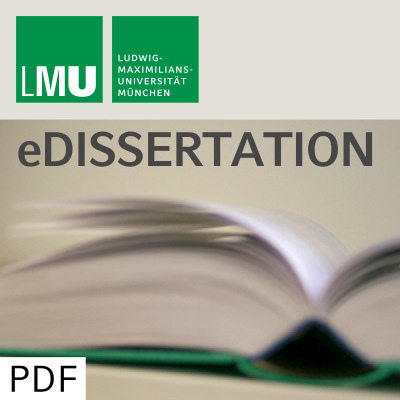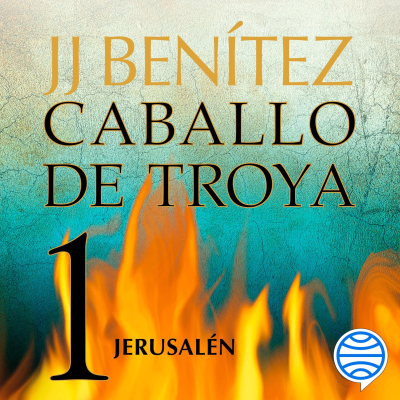
Fakultät für Chemie und Pharmazie - Digitale Hochschulschriften der LMU - Teil 02/06
alemán
Tecnología y ciencia
Empieza 7 días de prueba
$99 / mes después de la prueba.Cancela cuando quieras.
- 20 horas de audiolibros al mes
- Podcasts solo en Podimo
- Podcast gratuitos
Acerca de Fakultät für Chemie und Pharmazie - Digitale Hochschulschriften der LMU - Teil 02/06
Die Universitätsbibliothek (UB) verfügt über ein umfangreiches Archiv an elektronischen Medien, das von Volltextsammlungen über Zeitungsarchive, Wörterbücher und Enzyklopädien bis hin zu ausführlichen Bibliographien und mehr als 1000 Datenbanken reicht. Auf iTunes U stellt die UB unter anderem eine Auswahl an Dissertationen der Doktorandinnen und Doktoranden an der LMU bereit. (Dies ist der 2. von 6 Teilen der Sammlung 'Fakultät für Chemie und Pharmazie - Digitale Hochschulschriften der LMU'.)
Todos los episodios
250 episodiosLow Sensitivity Energetic Materials
Reactions of Carbanions with Michael Acceptors and Electron-deficient Arenes
The roles of integrin Alpha4Beta1, Alpha4Beta7 and the small GTPase RhoH during hematopoiesis and autoimmunity
The Effect of Lethal Toxin on the Respiratory Epithelium.
Inhalational anthrax is an acute infectious disease caused by exposure of the lungs to B. anthracis spores. Alveolar macrophages engulf spores causing them to germinate to the vegetative form of B. anthracis, which secretes edema toxin (ET)and lethal toxin (LT). The pathogenesis of inhalational anthrax is characterized by flu-like symptoms, respiratory distress, meningitis and shock, which is fatal in almost all cases. The mechanism behind the respiratory distress is not well understood. Therefore, our goal was to determine the effects of lethal toxin in the human lung epithelium. To study alterations in a more physiological setting, we developed a differentiated, polarized lung epithelial system. Lethal toxin exposure disrupted the lung barrier function and wound healing. Assembly defects of junction proteins and additional multicellular junction sites resulted in a higher permeability. Pretreatment with keratinocyte growth factor (KGF) and dexamethasone increased the viability, resulting in the rescue of the permeability changes. Upon LT treatment, a more rigid cytoskeleton was observed, evidenced by enhanced actin stress fiber formations and tubulin stabilization. Cytoskeleton and adhesion alterations prevented the epithelial cells from polarization, directed migration, and wound healing. The MAPK pathway and Cdc42 activity might be partially responsible for these motility defects. Lethal toxin is known to induce rapid cell death in murine macrophages. In contrast, human epithelial cells are more resistant to the cytotoxic effect of LT. By following the growth of epithelial cells after LT treatment, we observed inhibited cell proliferation due to a cell cycle arrest in the G1 phase. Surprisingly, biotinylated lethal factor did not induce cytotoxicity in murine macrophages. This is not due to an internalization or proteolytic activity defect; instead changes in the mitochondrial potential and proteasome activity were observed. Biotinylated LT did not reduce proteasome activity as seen in LT treated cells and caused hypopolarization of the mitochondria. However, it is possible that biotinylation of lethal toxin could prevent interaction of LT with proteins that induce cell death. The major challenge for anthrax treatment is to find a treatment, which can act faster, is easy to use and can bring patient out of the dangerous physiological state in late pathogenesis. Our study has implications in saving the viability and barrier function of lung epithelial cells. One can devise better dosage and delivery of KGF and dexamethasone as treatment modality for post anthrax exposure to reduce respiratory distress. Furthermore, overcoming the cell cycle arrest by the development of a drug would reduce the damage of lung epithelial cells and induce proliferation. The discovery that biotinylated LT is non-toxic to murine macrophages could revolutionize treatment of anthrax infection. Exploring the types of posttranslational modifications of LT that decrease toxicity and finding the mechanism behind it might, lead to therapies that directly counteract the effects of the lethal toxin in vivo.
NMR-spektroskopische und röntgenkristallographische Untersuchungen von ein- und zweikernigen Palladium(II)-Kohlenhydratkomplexen
Kohlenhydrate gehören zu den Biomolekülen mit dem mengenmäßig größten Anteil in der Natur, jedoch wurden sie lange Zeit fast ausschließlich als Energiespeicher, Stütz- und Gerüstsubstanzen betrachtet. Die in den letzten Jahren stetig wachsenden Erkenntnisse ihrer essentiellen Bedeutung in wichtigen biologischen Prozessen und die damit verbundenen vielversprechenden Anwendungsmöglichkeiten als Impfstoffe und Medikamente gegen eine Reihe von Krankheiten wie zum Beispiel Krebs, Aids, Diabetes oder Alzheimer führen jedoch zu einem immer größer werdenden Interesse dieser Stoffklasse. Die vorliegende Dissertation gibt einen umfassenden und systematischen Einblick in die Koordinationsmöglichkeiten von Kohlenhydraten an Palladium(II). Dabei erweist sich Palladium(II) in besonderem Maße als ein Zentralatom, das in der Lage ist, die Isomeren- und Konformerenverteilung von Monosacchariden drastisch zu verschieben und so Formen zugänglich zu machen, die ohne Komplexierung nur schwer oder gar nicht nachweisbar sind. Palladium(II) ermöglicht nicht nur stabile Komplexe sowohl mit Pyranosen als auch mit Furanosen in den verschiedensten Bindungsmodi aufzubauen, sondern dient darüber hinaus, durch die in Abhängigkeit des jeweiligen Bindungsmodus auftretenden charakteristischen CIS-Werte der 13C-NMR-Signale, als „Sonde“ für die Koordination an ein bestimmtes Kohlenhydratisomer. Die erhaltenen Ergebnisse erweitern grundlegend die Kenntnisse der Koordinationschemie auf diesem Gebiet und können auch aus pharmazeutischer und katalytischer Sicht von Bedeutung sein.
Elige tu suscripción
Premium
20 horas de audiolibros
Podcasts solo en Podimo
Podcast gratuitos
Cancela cuando quieras
Empieza 7 días de prueba
Después $99 / month
Empieza 7 días de prueba. $99 / mes después de la prueba. Cancela cuando quieras.























